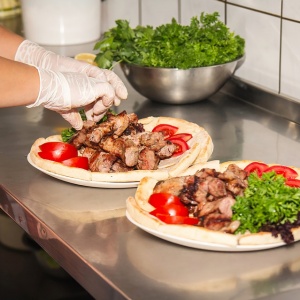10 Simple Ways to Prevent Food Poisoning

Anyone who has experienced food poisoning before will tell you how horrible it is, but there are also a few myths surrounding it. For example, the common perception of food poisoning is that it’s something we catch from a poorly prepared meal
How can food poisoning be avoided? We’ve broken down ten of the most important tips covered in EduCare’s food hygiene & safety online training that ensure all food is prepared and consumed safely.
-
Wash your hands again, again, and again
One of the key basics to preventing food poisoning is to make sure that the kitchen you’re working in, the implements that you’ll be working with, and your hands are clean. This may seem overly basic, but washing your hands as often as possible, especially when you’re working with raw meat, is incredibly important. If your hands haven’t been washed properly, you can spread bacteria across your entire kitchen, potentially contaminating other foods and substances, which can easily lead to food poisoning.
Check out this useful video to see how to wash your hands effectively.
-
Keep your raw meat and vegetables separate
When you get home from the supermarket and unpack all of the delicious things you’ve bought, it’s essential to keep raw meat far away from ready-to-eat foods, such as vegetables and fruit. The reason this is so important is that the majority of ready-to-eat foods aren’t cooked before consumption, so any germs picked up from raw food aren’t killed off during the cooking process.
-
Check your fridge temperature is below 5°C
Bacteria loves fuel and warm places. Cutting off one of those resources will prevent it from being able to thrive and spread. By keeping your fridge below 5°C, you ensure that bacteria doesn’t have its ideal breeding ground. Keeping food at a low temperature means bacteria can’t breed and your food is kept safe, so be sure to check your fridge’s temperature after you pop food in there — especially meats. Food hygiene and safety training
-
Cool your leftovers quickly
We all love leftovers, but it’s very important to cool them quickly. Cooling leftovers within 90 minutes of being prepared, then making sure they go straight in the fridge or freezer, is the best way to ensure that your delicious leftovers will still be good for the next few days.
-
Don’t reheat meat more than once
When the time comes to enjoy your delicious, properly
-
When in doubt, throw it away
If you’re not sure how food was prepared, served, or if it was stored safely, don’t feel bad about throwing it out. Food that’s been left at room temperature for a long period of time might contain bacteria that can't be destroyed by cooking or reheating. Although it’s tempting, don't attempt to eat food that you're unsure about — just throw it out. Even if looks completely fine, it might not be safe!
-
Defrost food safely
This is a big aspect of food hygiene and safety training. The essential thing to remember is to not thaw food at room temperature. The safest way to defrost food is to actually do it in the fridge — moving it from the freezer to the fridge a day or so before you plan to cook it. If you microwave frozen food using the "defrost" or "50% power" settings, make sure to cook it immediately. Otherwise, bacteria has time and an ideal temperature in which to grow.
-
Make sure you’re cooking food to a safe temperature
When you’re cooking, make sure that meat is steaming hot all the way through, with no pink meat inside. Also, you shouldn’t wash raw meat before cooking, as this risks spreading bacteria around your kitchen.
-
Clean your work surfaces
As you learn in food hygiene and safety training, washing worktops before and after preparing food, particularly after they've been touched by raw meat, is absolutely key to avoiding food poisoning. You don't need to use any specific antibacterial sprays; hot, soapy water is fine. This also goes for the dishcloths in your kitchen. You should wash dishcloths and tea towels regularly and let them dry before you use them again. Dirty, damp cloths are the perfect place for germs to breed!
-
Respect ‘use-by’ dates
It doesn’t matter if it looks and smells fine: don't eat food that's past its use-by date. Use-by dates are based on scientific tests that show how quickly harmful bugs can develop in the packaged food. Respect them and you’ll stay safe!
